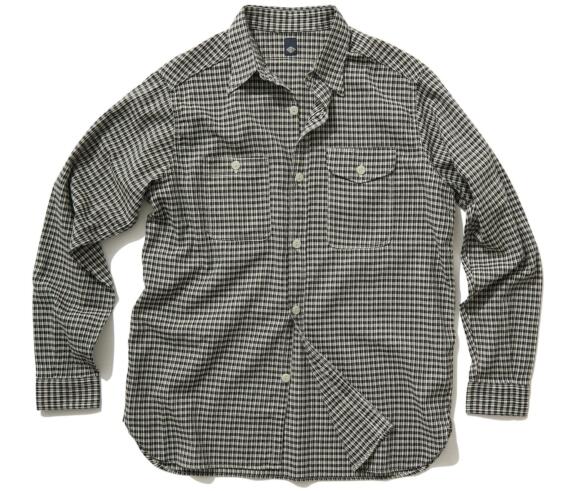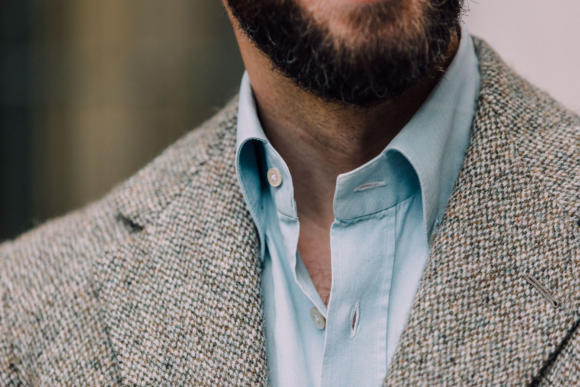I know, a graph! Given the nerdery that’s often included on these pages, I’m surprised it’s taken so long for us to lead with a graph. (Mobile users: try opening the image in a new tab.)
Let me tell you what it shows. This plots my body and shirt measurements over time. I talked to all the shirtmakers I’ve used in the past 15 years and asked them for the body measurements they’ve taken, plus those of the finished shirts.
On the graph you see the waist measurements plotted (in centimetres) along with the differential. The ones of my body (blue line) show how I changed over that period, with weight generally going up (noticeably during Covid) and some variations in exercise.
Those changes are not dramatic. I’ve never been a gym guy; I generally prefer activity that makes me healthier or is competitive and so (for me) more fun. But now and again injuries have affected things as well.
More importantly, the actual shirt measurements (orange line) and difference between the two (green) show how my shirts have become bigger by more than just those required for the changes in body shape.
Why is this interesting? Because it proves numerically how my style has changed – towards slightly bigger, more comfortable shirts.
I thought this was the case, but was never certain. I’ve asked for shirts to be bigger during fittings, but you never know how much of that is your body changing and how much is preference. So I thought it would be fun to analyse it.
Luca Avitabile (below), who I’ve probably used the most, generally makes his shirts 10-12cm bigger in the waist than the body of the customer. That’s the amount of excess material.
But as he says, that’s the starting point. It’s his job to assess how much space the customer wants – with questions, but also visual clues like how loose his existing clothes are, or how he acts when he’s wearing the fitting shirt. You have to dress the mind as well as the body.
The final excess could be 10cm or 18cm. It depends what look they want: how they want to feel and what style they’re after. I thought my preferred fit – my excess – had gradually increased over time, but wasn’t sure.

In a way, this is also a graph that tracks fashion. A bit like industry data that used to show how the widths of ties or lapels vary – or more famously, women’s hemlines. A long-in-the-tooth tailor will tell you how they varied their lapels over the decades, but only from three to four inches as the fashion went from two to five.
Like those tailors, my changes have been moderate. My shirts were never super-tight, and today they’re not as loose as some either. In fact that’s obvious: if the changes weren’t so subtle, you wouldn’t need to use data to see them.
It’s interesting looking at brands too. Someone like Jake’s would do a waist of 114cm for my neck size, compared to the 107cm I have on my bespoke, even now at its biggest. Rubato does 116cm for its work shirts (below), which I always find a little blousy, whereas their ‘R’ shirts are 110cm, which is almost perfect.
But, Simon 10 years ago would have even found those shirts too blousy. Because back then the data shows the excess I preferred was 10cm. Today it’s 16cm.

The data is not perfect, because shirtmakers don’t remeasure you unless they feel they have to. It’s one of the advantages of bespoke shirts over suits. If a maker is reliable and your weight is consistent, you can simply order by looking at fabrics without needing a fitting.
So in the past 15 years Luca has only measured me a handful of times. We don’t have the initially records either, back when he was Satriano Cinque. Fortunately a few other makers have filled in the gaps, though there are still some straight lines in there between some years.
The other advantage of shirts is that they don’t necessarily last long enough for size changes to be an issue. I’ve had quite a few suits that have become too tight in the past 15 years (probably, in the same way, as a result of both changing size and preferences).
But shirts haven’t been so bad. The issue is usually more that at some point I will contrive to spill something irreversible on a shirt, or catch it, or tear it. While I love fraying on some collars and cuffs, I’d rather not have it on dress shirts.

One thing I can recommend is taking the darts out of your old shirts. It affects the waist more than the chest of course, and doesn’t help with the neck or sleeves. (Sleeves will often shorten as you’re upper body gets bigger – the muscles of the back and shoulders pull them up).
But your waist is usually the area that needs the most help, and darts can add several centimetres – which, the data shows, is as much as my shirts have changed in the past six years, weight and preference combined.
I don’t think there’s much reason for readers to go down a similar rabbit hole, but it is useful to have a rough idea of the measures you prefer in a shirt, to make buying online easier. I have an online note with a simple list of each, which gets referred to surprisingly often.

Above, a bespoke shirt from Luca circa 2020. Feels a little tight now, but I know from the data that’s more preference than it is body shape.
Thank you to all the shirtmakers that helped in the assembling of this piece – particularly given almost all of it seemed to be on paper in old ring binders!
